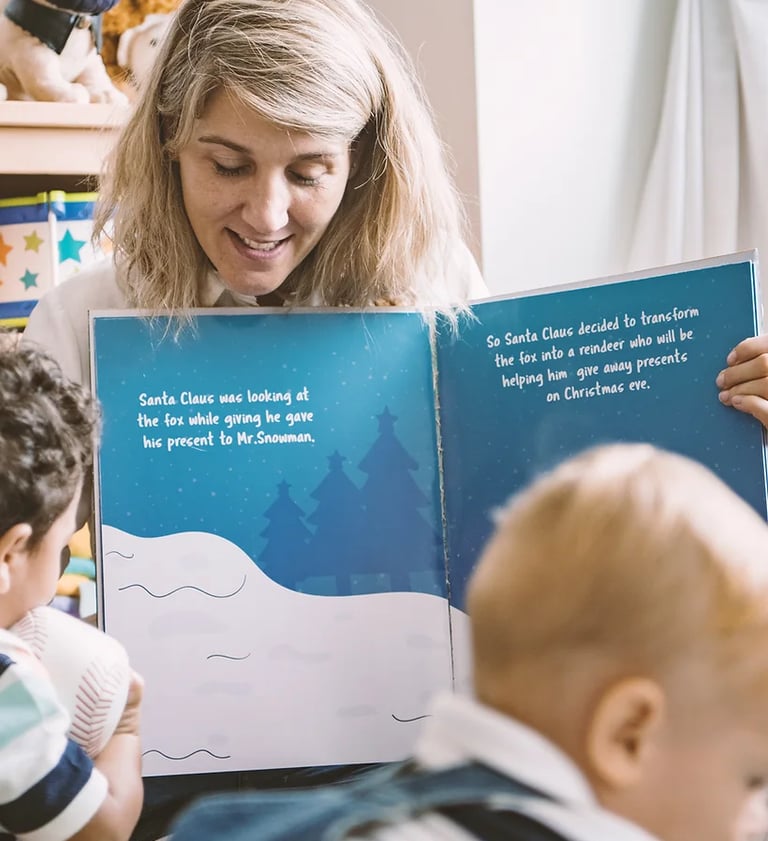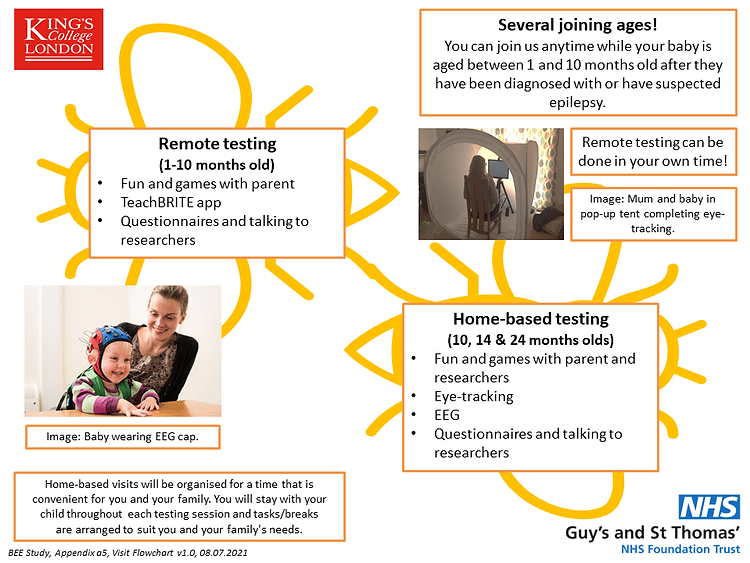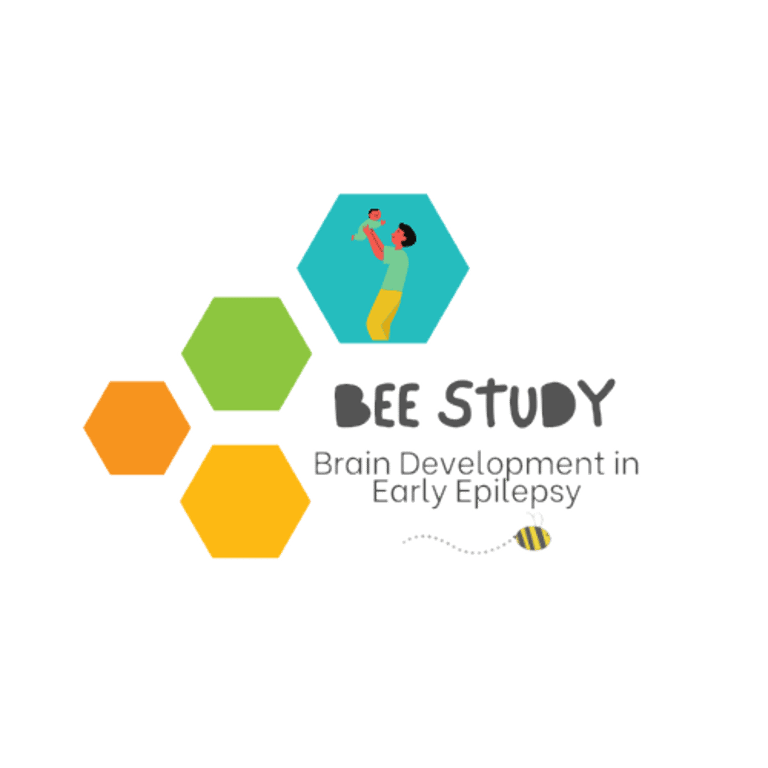Brain Development in Early Epilepsy
Study summary
Background
Autism and epilepsy commonly co-occur, with up to 40% of children with epilepsy also being diagnosed with autism. Epilepsy significantly affects quality of life and shortens life expectancy in autistic individuals, but the reasons for these associations are largely unknown. Previous research has often asked parents to recall certain aspects of their babies development after receiving an ASD diagnosis, meaning we miss a critical period of development.
The BEE study aims to track early behavioural, brain and cognitive development in infants with epilepsy in their first two years of life. Our goal is to better understand early development so that we can identify what predicts autism. The study will use entirely home-based assessments, including recording babies' brain activity, using play-based tasks and questionnaires, to measure these different areas of development. By understanding how both of these conditions affect early development, we hope to be able to improve later outcomes for individuals with epilepsy and autism.


Assessments
This study will be assessing babies with epilepsy at multiple time-points across early development, starting around the time of their first seizure, then again at 10, 14 and 24 months. You can read more about the eligibility criteria for taking part here
All activities and tasks have been selected to be non-invasive and easy to tolerate in babies and young children. We will be asking parents to complete a number of online questionnaires and interviews related to their baby's development, covering topics such as behaviour, sleep and language. Following this, we will be conducting three home-visits to participating families' homes to complete play-based and neurocognitive tasks. This includes an EEG (recording brain activity) and and eye tracking activity to learn more about babies brain development, and how they attend to and perceive things in their environment.




See below for a flow chart of the planned activities we will complete across the study:
